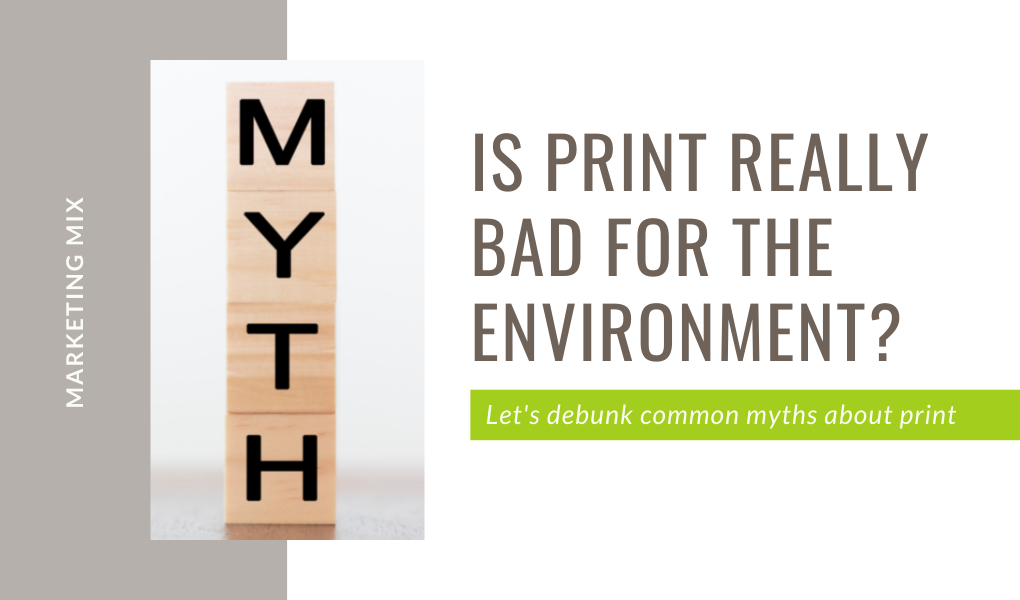For years, companies have been encouraging customers to “go paperless” in order to “save the environment.” But is paper production and print really depleting natural forests? And is digital communication better for the environment than print?
The answer to both those questions is no. People tend to assume that the environmental impacts of print are worse than they are, and that the environmental impacts of digital are better than they actually are. The reality is that paper is one of the most sustainable and recycled products on the planet, and while ewaste can be toxic, is not biodegradable and accumulates in soil, air, water and living things.
Let’s dive deeper into some of the most common misconceptions about print.
Myth: Going paperless saves forests.
Truth: North American forests are a renewable resource that is continuously replenished using sustainable forest management. Learn more about sustainable forestry.
Myth: Paper is a wasteful product
Truth: Paper is one of the most recycled products in the world. In 2019, the US recycled 66.2% of its paper. Plus, paper that isn’t recycled is biodegradable and won’t live in landfills forever. Learn more about paper’s sustainability
Myth: Paper production consumes an excessive amount of water
Truth: While paper production does require water, using water doesn’t necessarily mean consuming it. Many mills have changed their practices so that they are recycling and reusing water multiple times. Learn more about how water is used in paper production.
Myth: Paper production is a major cause of global greenhouse gas emissions.
Truth: Paper is one of the lowest industrial emitters. In 2018, the paper industry accounted for 0.8% of global greenhouse gas emissions. This is because 65.2% of energy demand at mills is met with renewable biomass energy. Learn more about paper’s global greenhouse emissions.
Myth: Digital is always the preferred means of communication.
Truth: There are many cases where print is still preferred. Even people who receive and respond to hundreds of digital messages a day, still have certain communication they prefer to keep on paper. In particular, many seem to prefer paper books over ebooks, and they prefer to receive printed communication from financial institutions and other service providers. Read more about why people prefer print.
Listen, there are some good reasons to “go paperless” but most of those reasons have to do with cutting operation costs, not saving the environment. Plus, there are also some really great reasons to stick with print! So if you find that print is working for your company, don’t let environmental guilt get the better of you.
If you want to learn more, we highly recommend you check out https://twosidesna.org/graphics-papers. This non profit organization is doing a great job of educating consumers, printers and paper mills about best practices for environmentally safe paper production and use.

